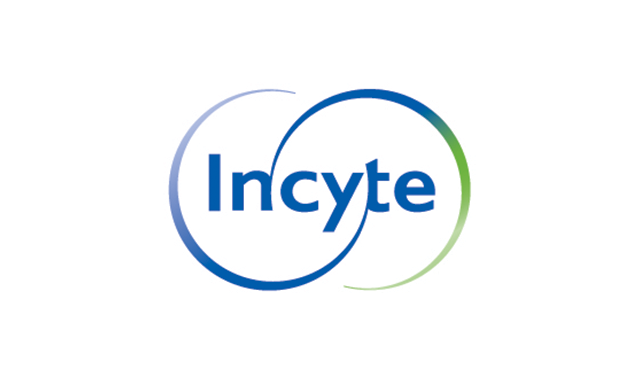News
Article
Authors Identify Monoclonal Antibody to Selectively Target CALR Mutations in MPNs
Author(s):
Key Takeaways
- INCA033989 targets CALR mutations, showing efficacy in engineered cell lines and mouse models of MPNs, without affecting other cells.
- CALR mutations are significant in JAK2V617F-negative essential thrombocythemia and myelofibrosis, driving clonal proliferation of hematopoietic stem cells.
- The antibody's mechanism involves dynamin-dependent endocytosis, with further research needed to understand its full binding mechanism.
- A phase 1 trial is underway, marking a significant advancement in CALR-mutated MPN therapy, with potential for broader application.
A decade after the discovery of CALR, the results are the first for a possible therapy for CALR-mutated MPNs to reach the clinic.
A monoclonal antibody that selectively targets mutations in calreticulin (CALR), the second most common driver of myeloproliferative neoplasms (MPNs), showed promising results in tests with engineered cell lines and in a mouse model, according to findings published yesterday in Blood.1
A decade after the discovery of CALR, the results are the first for a possible therapy for CALR-mutated MPNs to reach the clinic, according to an accompanying commentary,2 which described the discovery of CALR mutations as the activator in most cases of JAK2V617F-negative essential thrombocythemia (ET) and myelofibrosis (MF) cases “as a surprise, because a major role for CALR had not been previously described.”2
Incyte logo | Image: Incyte

The monoclonal antibody, INCA033989, being developed by investigators from Incyte with collaborators from the University of York and hospitals in France, was described by study authors as having “antagonized mutated CALR-driven signaling and proliferation in engineered cell lines and primary CD34+ cells from patients with MPN. ”At the same time, the novel antibody showed no binding activity with other cells.
Finally, in an experiment with mouse model of mutated CALR-driven MPN, treatment with an antibody surrogate designed for the mouse model “effectively prevented the development of thrombocytosis and accumulation of megakaryocytes in the bone marrow.”
The investigational antibody reduced replication of disease-initiating cells in both primary and secondary transplantations, the authors said, “illustrating its disease-modifying potential.”
There are 3 main types of MPN disorders, with most driven by mutations in Janus kinase (JAK2); this mutation accounts for 90% of patients with polycythemia vera (PV), 60% of patients with ET, and 55% of patients with MF. Next, CALR mutations are found in 25% of patients with ET and 35% of patients with MF. Mutations in CALR are not responsible for PV, the authors state.
They note that the mutant CALR protein is oncogenic; patients with ET and MF show clonal proliferation of hematopoietic stem cells. Patients with ET in particular are at risk of thrombosis and hemorrhage while those with MF may develop anemia or leukopenia, splenomegaly, bone marrow fibrosis, or see their disease transform into leukemia. A 2021 study appearing in Blood found that the 10-year mortality risk for patients younger than age 60 was 13% for those with ET, 18% for PV, and 49% for MF, compared with 6% for a control group.3
The investigators note that there has been great progress understanding mutated CALR in the 10 years after its discovery, including how it interacts with the thrombopoietin receptor (TPOR) and the resulting behavior of the mutated CALR protein with TPOR on the cell surface.
“Such findings fueled interest in targeted therapeutics,” they wrote, with both vaccines and antibodies being pursued.1 The cell surface of mutated CALR makes it an obvious target for antibodies, and the authors outlined results from earlier preclinical studies involving the mechanisms that contributed to development of the investigational antibody.
In describing the mechanism of action, the authors say the antagonism of mutated CALR with the antibody “was determined to be partially through dynamin-dependent endocytosis of the INCA033989/mutCALR/TPOR complex. The data indicate that antagonism of the oncogenic function of MPN cells with INCA033989 is decreased upon inhibition of the dynamin dependent endocytosis pathway.”
More work is needed, they write, to fully understand the binding mechanism and how the response from TPOR. The early look is that the initial inhibition occurs rapidly, while the full process unfolds more slowly, the authors write.
The commentators, Camelia Benlabiod, PhD, and Bethan Psaila, MBBS, PhD, of the University of Oxford, outlined upcoming research questions, including whether this new antibody will work in various subtypes, but nonetheless, they say it represents an important breakthrough.2 They note that a phase 1 trial is underway (NCT05936359), with a phase 1 study of a CD3-engaging bispecific antibody (NCT06150157) coming “hot on its heels.”
References
- Reis ES, Buonpane R, Celik H, et al. Selective targeting of mutated calreticulin by the monoclonal antibody INCA033989 inhibits oncogenic function of MPN. Blood. 2024;144(22):2336–2348.https://doi.org/10.1182/blood.2024024373
- Benlabiod C, Psaila B. INCA033989: the first shot on goal for MPNs? Blood. 2024;144(22):2278–2279. https://doi.org/10.1182/blood.2024026811
- Abu-Zeinah K, Saadeh K, Silver R, Scandura J, Abu-Zeinah G. Excess mortality in young patients with myeloproliferative neoplasms. Blood. 2021;138(suppl 1):235. https://doi.org/10.1182/blood-2021-146029
2 Commerce Drive
Suite 100
Cranbury, NJ 08512
© 2025 MJH Life Sciences® and AJMC®.
All rights reserved.




